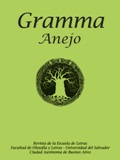LA SÁTIRA EN LA LITERATURA ARGENTINA: IRONÍA Y HUMOR
Palabras clave:
Sátira, Ironía, Humor, Literatura Argentina, Borges, Bioy CasaresResumen
Este proyecto —continuación del anterior— consistió en una indagación de la ironía filosófica y literaria y sus relaciones con el humor en la literatura argentina. Estudiamos concretamente cuatro autores: Jorge L. Borges y Adolfo Bioy Casares —en forma individual y en colaboración—, Roberto J. Payró en El casamiento de Laucha (1905), Pago Chico (1908) y Divertidas Aventuras de un nieto de Juan Moreira (1911) y Ezequiel Martínez Estrada, en este último especialmente su obra narrativa menos investigada —La tos y otros entretenimientos (1957)—, pero también su obra ensayística —Cuadrante del Pampero (1956), Exhortaciones (1957), La cabeza de Goliat (1940) y Las Cuarenta (1957)—. La sátira usa de la ironía para realizar sus fines e incluso hemos definido el humor como una especialización de la sátira menipea. El aspecto lúdico de las obras escritas por Borges y Bioy en colaboración como vemos en el Libro del cielo y el infierno (1960), parece que se extiende a sus obras individuales, en particular a las de la última época, en el caso de Jorge L. Borges, como La memoria de Shakespeare (1983), y Atlas (1984), y a Diario de la guerra del cerdo (1969), y a Dormir al sol (1973), en el caso de Bioy Casares, pero ahora no se expresan con una sátira descarnada como en la obra que desarrollan en colaboración sino bajo los recursos elusivos de la ironía y del humor.Descargas
Publicado
Cómo citar
Número
Sección
Licencia
CREATIVE COMMONS 4.0 Internacional
Los trabajos publicados en esta revista están bajo Licencia Creative Commons Atribución-NoComercial-CompartirIgual 4.0 Internacional.
Las obras publicadas bajo esta licencia pueden ser compartidas, copiadas y redistribuidas en cualquier medio o formato. Asimismo, se autoriza la adaptación, remezcla, transformación y creación. Tanto el compartir como el adaptar son posibles siempre y cuando se le otorgue el crédito a la obra de forma adecuada, proporcionando un enlace a la licencia e indicando si se han realizado cambios. Asimismo, no es posible realizar un uso comercial del material.








